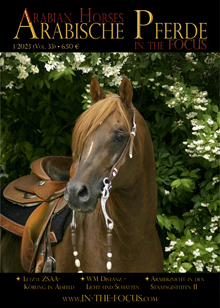There are several approaches to unearth the origin of the Arabian breed. One of them is through DNA analysis, another is by archaeological findings. Both seem to come to the same result: The Arabian breed originated in what we know today as Syria.
Genetic Approach
For his dissertation, Dr Khanshour of Texas A&M University analyzed the genetic structure of 537Arabian horses from seven populations (Middle Eastern as well as Western populations) by using microsatellites. Further, he sequenced the whole mtDNA D-loop of 251 Arabian horses. The results consistently showed higher levels of diversity within the Middle Eastern populations compared to the Western populations. Native populations from the Middle East, such as Syrian, represented a hot spot of genetic diversity. Typically, geographical centres of origin show the greatest genetic variation, therefore an area in and around Syria might be most likely the centre of origin for the Arabian breed, before it spread to Egypt, to Saudi Arabia and other areas, whose populations have only a portion of this variation.
Historic Facts
Since thousands of years, the “Levante” (Eastern Mediterranean) has been a melting pot of different cultures with centres of commerce and crossing points of trade routes, such as the silk road, incense road, etc. Along these routes, religion, trade and technology have spread. Further, the domestication centre of the horse is supposed to be in the Eurasian plains some time after 4000 BC, from where the horse has likely been brought either as beast of burden or as merchandise along these trade routes to the Levante. A small horse sculpture was discovered by a team of the University of Chicago at Tell Es-Sweyhat, a site on the Euphrates River in northern Syria (ancient Mesopotamia), dated to about 2300 BC; it is the oldest known figure of a domesticated horse.
According to Dr Sandra Olsen, a zooarchaeologist and curator at the Biodiversity Institute and Natural History Museum at the University of Kansas, during the New Kingdom, the Egyptian Empire stretched up into this area (Levante), and there are records of Thutmose III (1479-1425 BCE) bringing horses and chariots back from Syria as war booty. By the time of Amenophis II (1427-1401 BCE), Arabian horses were commonly depicted in Egyptian tomb paintings. The earliest petroglyphs in Saudi Arabia that show equines with Arabian features date to between 800 BCE and 200 CE, based on associated inscriptions. Therefore it appears, that the archaeological record supports the genetic findings that Syria and surrounding areas are the most likely source for the Arabian breed.
The Strains Disenchanted
Another interesting aspect of Dr. Khanshours research is, that it revealed no evidence that the Arabian horse breed has clear subdivisions depending on the traditional maternal based strain classification system. It appears that the strains (Hadbah, Hamadaniah, Dahmah, Koheilah, Obeyah, Saklawiah, and Muniqui) need to be seen in a socio-historical context rather than bearing any genetic basis.
Gudrun Waiditschka












